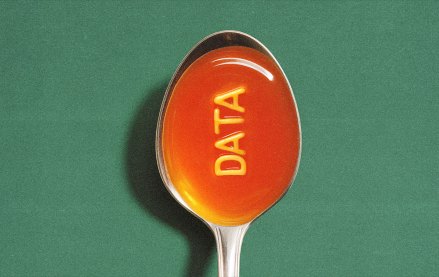Save 50% on a 3-month Digiday+ membership. Ends Dec 12.

Marketers have grown fixed on a simple, stubborn question: what portion of their spend reaches the person making the content?
What was once a direct handoff now threads through a growing constellation of agencies, platforms, networks, ad tech vendors and assorted brokers, each taking something before the creator gets paid.
The worry isn’t new. In fact, it mirrors the unease that pushed marketers to dissect the ad tech supply chain years ago. And just as they did then, they’re now looking for ways to trace this latest supply chain. A cross-industry group at the Interactive Advertising Bureau is leading the latest effort, aiming to map the commercial machinery that has formed around the creator economy — influencer marketing included.
Beyond mapping fees, the group plans to identify the gaps and inefficiencies in the chain, spell out the standards and infrastructure needed to fix them and deliver a proposal that platforms can use to establish a more uniform deal process.
Jamie Gutfreund, founder of creator marketing firm Creator Vision and a member of the group, described it as a way to surface the “interdependencies” that define influencer marketing today. Media agencies, creator marketing shops, talent managers, measurement firms, analytics providers — all of them sit between brand and the creator, and that’s before the ad tech layer is counted.
That doesn’t automatically make any of them a problem, to be clear. But with more money being spent on this sort of content, marketers realize they need a clearer view of the machinery they’re funding. This is the trust but verify stage of influencer marketing.
“I don’t know if I’d describe it as concern, but I do think more marketers have an appetite for transparency across what’s happening with their influencer platforms, agency partners, and the creators they’re working with,” said Lindsey Gamble, independent creator economy expert and consultant who is also on the IAB’s creator economy board.
A major reason for that appetite is the fog around what creators actually charge, leaving marketers uncertain about what they should be paying. Gutfreund compared the situation to a creator economy version of a Rube Goldberg system — not by design but by evolution. A standardized, differentiated currency — the creator equivalent of search’s cost-per-click — would help reduce that ambiguity. That’s where the IAB is focused now, working on guidelines for the measurements that underpin creator-brand transactions, the currency that ultimately determines how deals get done.
“Depending on how the scope of work is set up and what role a platform or agency is playing, the way creators get paid and the way that third party gets paid can vary a lot,” said Gamble. “So there’s growing interest from marketers in understanding where the dollars are actually going within an influencer program or campaign, especially when budget structure can impact the number of creators they can work with and the types of creators they can bring in.”
This kind of scrutiny was inevitable once creators began pulling the kind of attention marketers chase. The ad dollars followed, and with them a renewed push to prove the investment is delivering real value. And the pressure will only intensify. Creator economy ad spend is expected to hit $37 billion next year per the IAB, growing four times faster than the broader media market. Spotlighting where that money ends up will help some creators and squeeze others.
“The more middlemen there are, the more complicated the process can get,” said Jasmine Enberg, co-founder and co-CEO of Scalable, a media company covering the business of creators. “Managers, agency representatives and other intermediaries can provide structure and streamline negotiations, but the more hands a deal passes through, the less visibility brands have into whether they are spending their dollars wisely, especially without standardized pay rates.”
Without a direct line between creators and brands, she added, there can also be miscommunication and misaligned expectations, which can lead to poorer business outcomes.
More in Media

Workforce data, smarter AI integration among greatest workplace priorities in the new year
The growing importance of workforce data is just one of the prognostications people managers are making looking to the year ahead.

WTF is AI citation tracking?
Publishers are tracking AI citations to understand visibility, attribution gaps and referral traffic in these tools and platforms.

As big brands flood the podcast ad space, startups are refining strategies to stand out
While a influx of big advertisers is good news for podcast companies, it also makes it more challenging for small- to mid-sized brands to stand out in the space.





